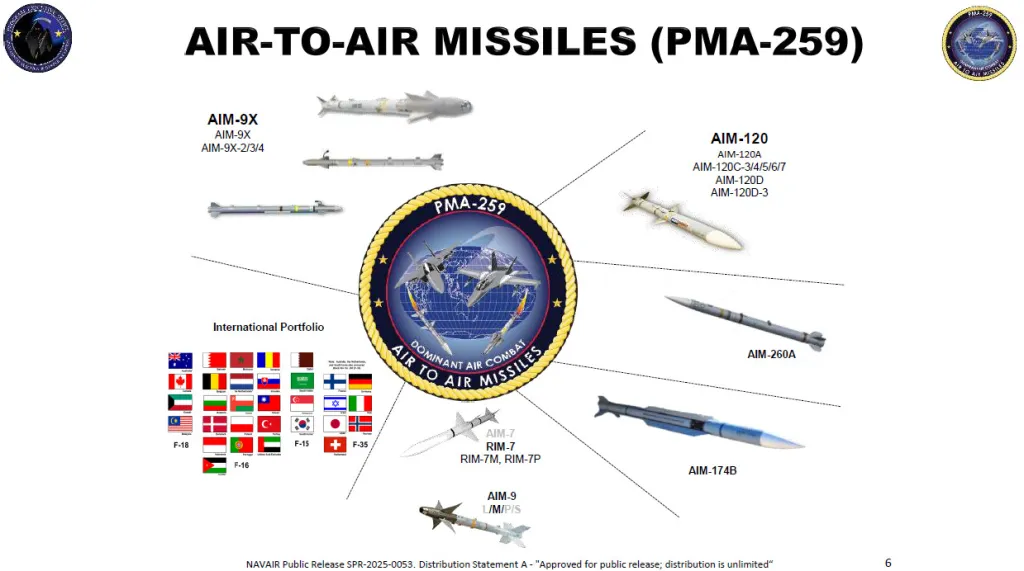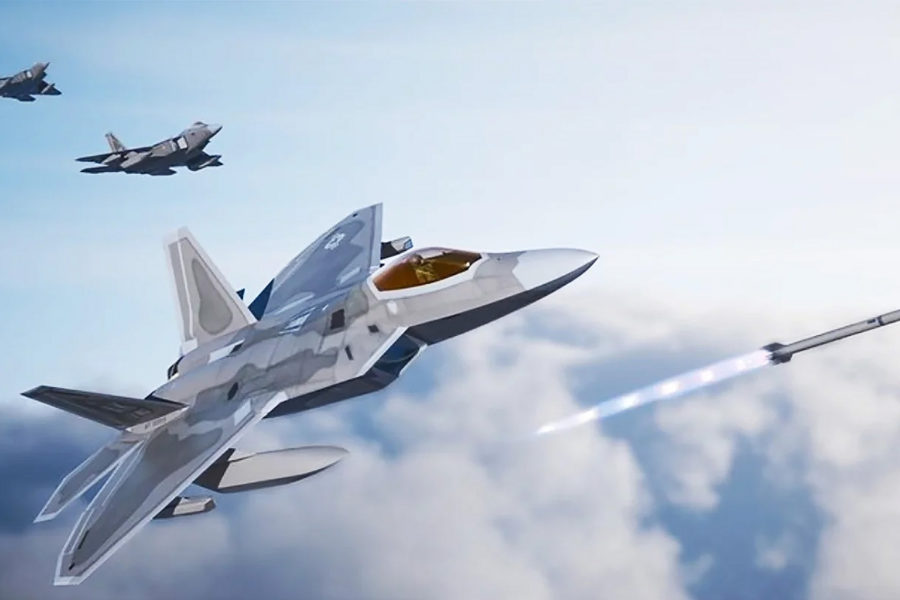Air Force Chief of Staff nominee Gen. Kenneth S. Wilsbach said he will give special attention to coordinating with the Navy on how the services jointly buy air-to-air missiles like the AIM-120 Advanced Medium-Range Air-to-Air Missile and the new, secret AIM-260 Joint Advanced Tactical Missile.
The AMRAAM, built by Raytheon, is the principal dogfight missile for Air Force, Navy, and Marine Corps fighters, as well as 43 U.S. partners and allies. The longer-ranged JATM is largely classified and is reported to be in the final stages of development and testing. It’s expected to be operational in the coming year.
In written testimony for the Senate Armed Services Committee ahead of his Oct. 9 confirmation hearing, Wilsbach said joint programs generally offer benefits but can be tricky when it comes to buying the actual hardware.
“Joint development and acquisitions offer opportunities to accelerate development, reduce costs, and improve interoperability,” as exemplified by the F-35 Joint Strike Fighter, Wilsbach wrote. But they’re also extra challenging, given their increased complexity “and the difficulty of balancing modernization with the urgent need to field operational capabilities,” both domestically and among partner nations.
Those challenges include “differing requirements, funding priorities, intellectual property concerns (protecting/managing), industrial base considerations, safety standards, export control, and program governance/management,” Wilsbach wrote.
Specifically addressing the AMRAAM and JATM, Wilsbach said “aligning procurements annually can be difficult when balancing competing priorities on next-generation munitions versus current year procurements.” The comment could suggest the Air Force and Navy have had different ideas about when and how much to transition from AMRAAM to JATM.
Air Force leaders have said JATM is to succeed AMRAAM—the new missile was supposed to be declared operational circa 2022-2023—and budget documents from two years ago indicated a slowing of AMRAAM purchases toward the end of the decade, following a brief downturn and then an upturn. At the time, then-Deputy Chief of Staff for Plans and Programs Lt. Gen. Richard G. Moore said the scaleback and subsequent boost of AMRAAM was a response to Congress asking for more production.
“Any munitions line that’s hot and is producing weapons right now” was programmed for an increase, Moore said in April 2023.
In July, the Air Force placed a record $3.5 billion order for an undisclosed number of AMRAAMs for itself, the Navy, and various Foreign Military Sales users, to be fulfilled through 2031.
A top service official recently told Air and Space Forces Magazine that JATM is not yet operational, citing issues with “integration” of the weapon on USAF’s fifth-generation fighters, the F-22 and F-35. Another official disputed those comments, though, and said the program is “progressing well,” though he acknowledged that it has missed its intended IOC date. The missile has been in test since 2020; the first platform planned to use it will be the F-22.
Raytheon announced in September than it has flown an AMRAAM to a successful intercept at a “record-setting,” but undisclosed, distance. The increase in range demonstrated over previous versions of the missile was “very significant,” a Raytheon official said. The range of the JATM is expected to be multiples of the AMRAAM’s, but the figures are tightly withheld by the Air Force. Both weapons are meant to reclaim some advantage after China fielded advanced versions of its PL-15 missile, which reportedly has a range of several times that of AMRAAM, potentially giving Chinese stealth aircraft a first-look/first-shot advantage over U.S. types.

The Air Force and Navy expect to place their first “at-scale” orders for JATM in fiscal year 2026. In that budget, the Air Force is asking $369 million for procurement and $425 million for continuing research and development. The Navy is asking for $302 million for procurement and $223 million for RDT&E. The Air Force is considered the “lead agency” for JATM development, just as the Navy is the lead on development and production of the AIM-9X Sidewinder heat-seeking air-to-air missile.
Wilsbach, in his written testimony, promised to work with the heads of the Navy and Marine Corps and the respective service acquisition executives on “early and continuous engagement, flexible program structures, strong agreements, dedicated program management,” and “probably the most critical” elements: “sufficient and stable funding” for joint programs.
Wilsbach also told lawmakers he will work to effectively and accurately communicate to industry the Air Force’s “demand signal” for precision munitions and seek additional multi-year procurements for weapons the service needs in large quantities.


